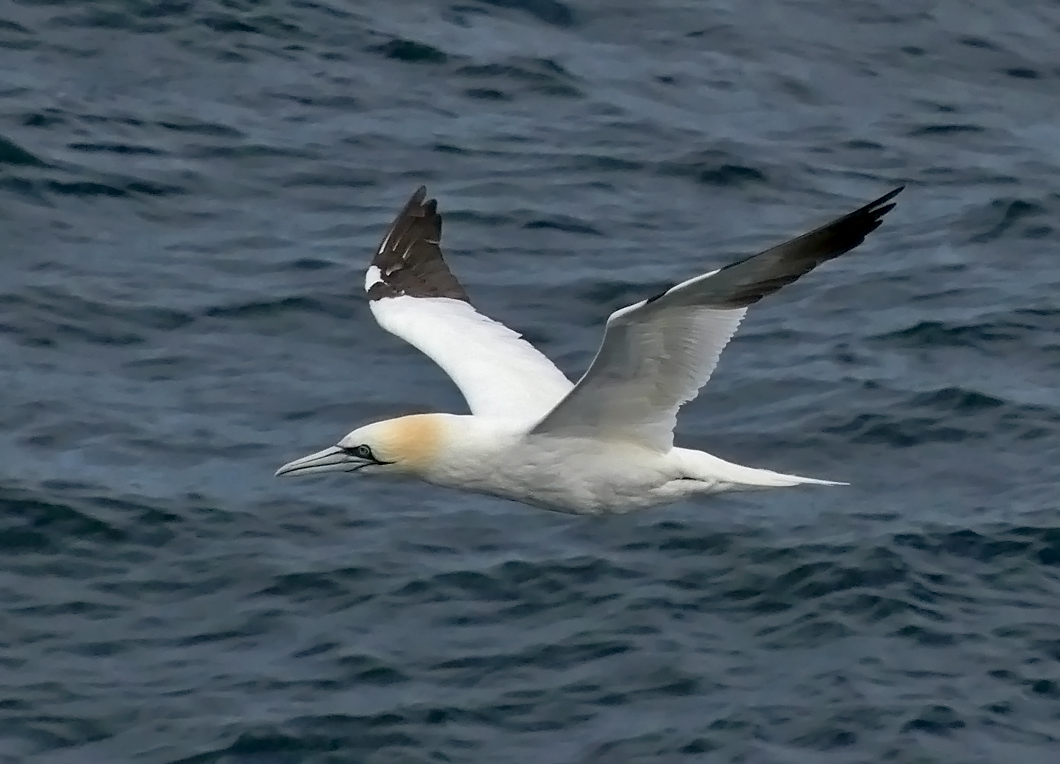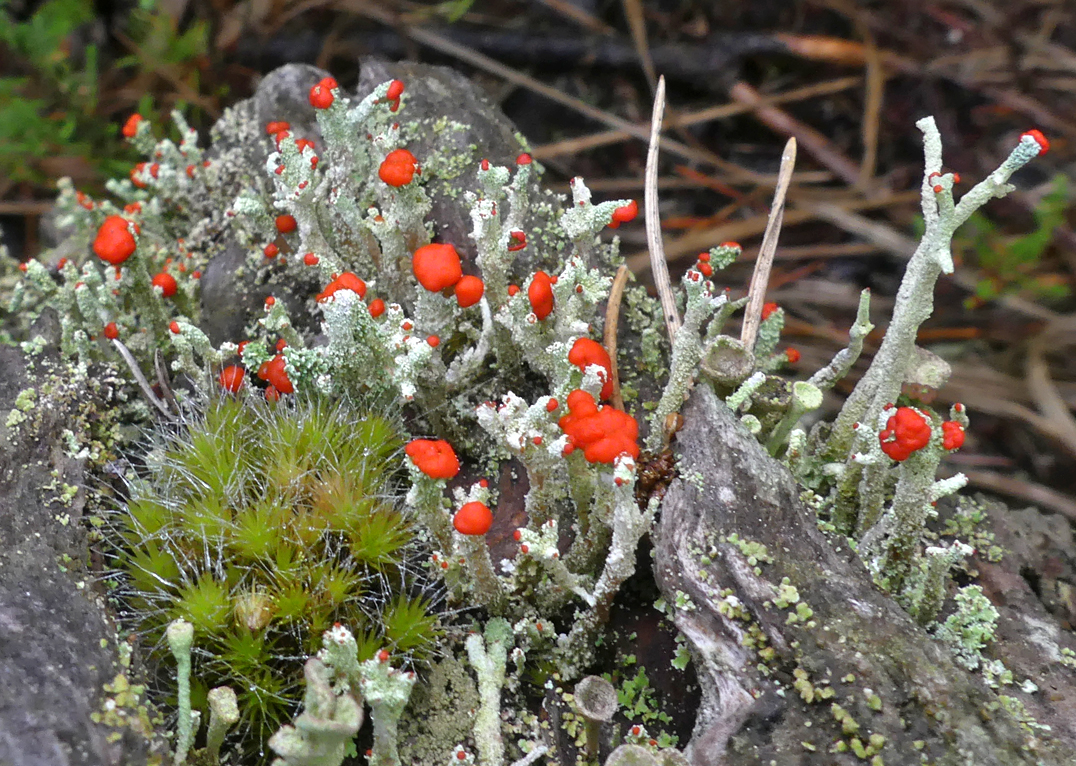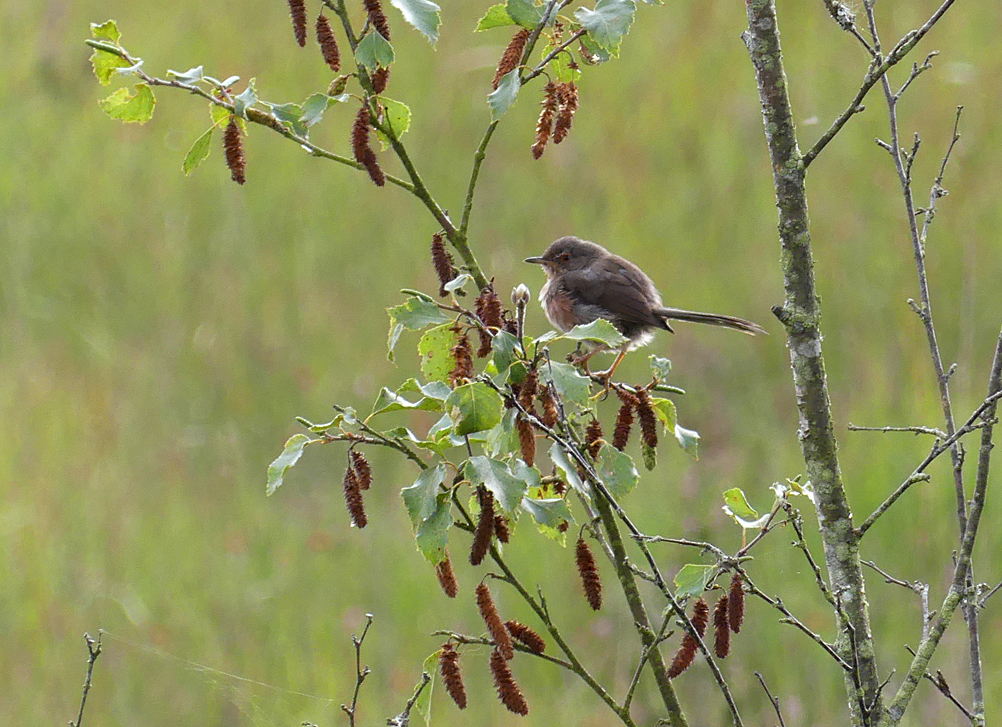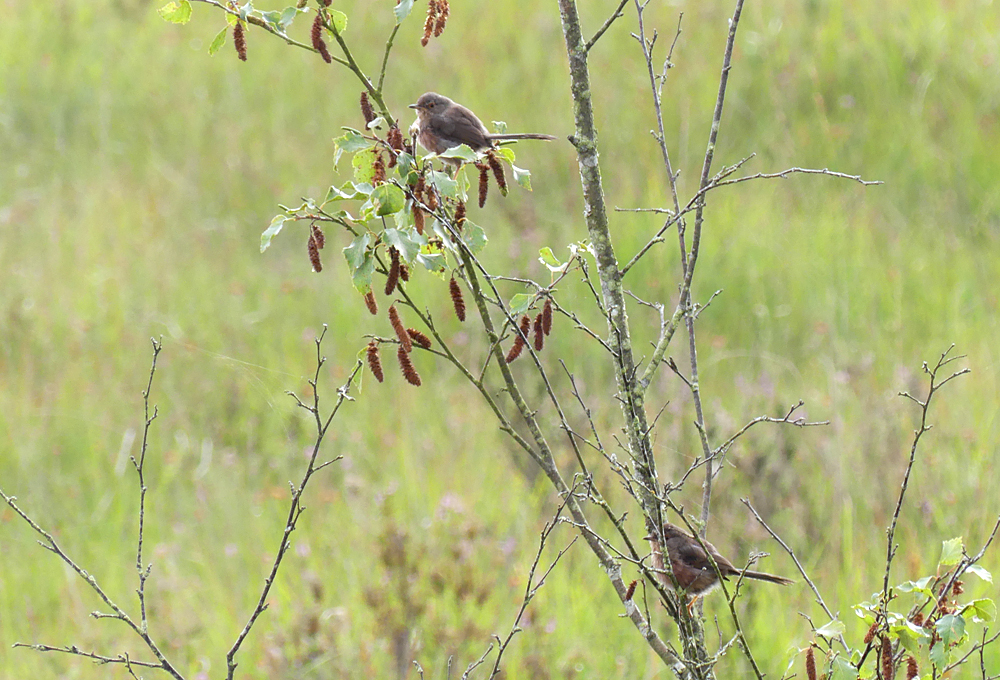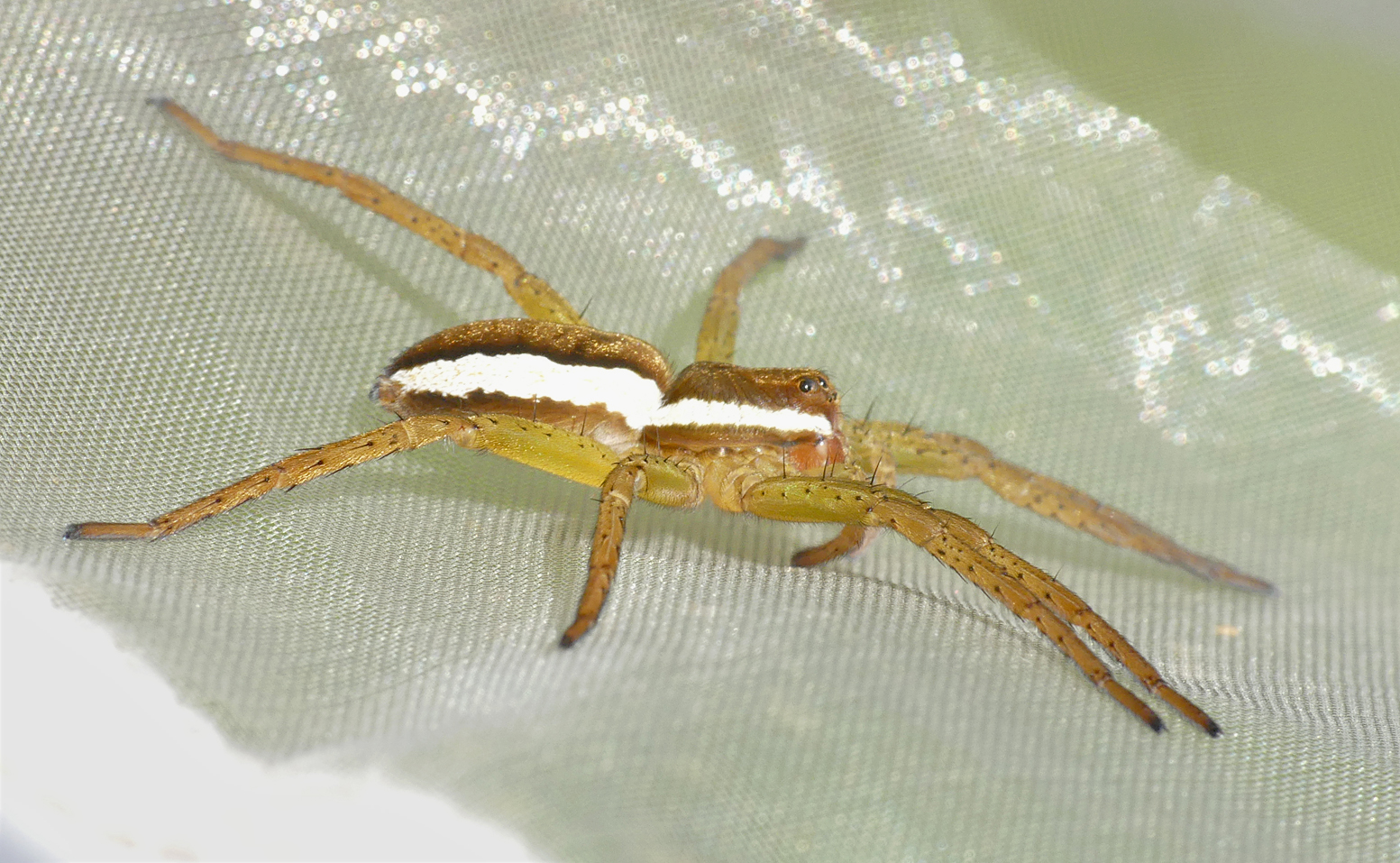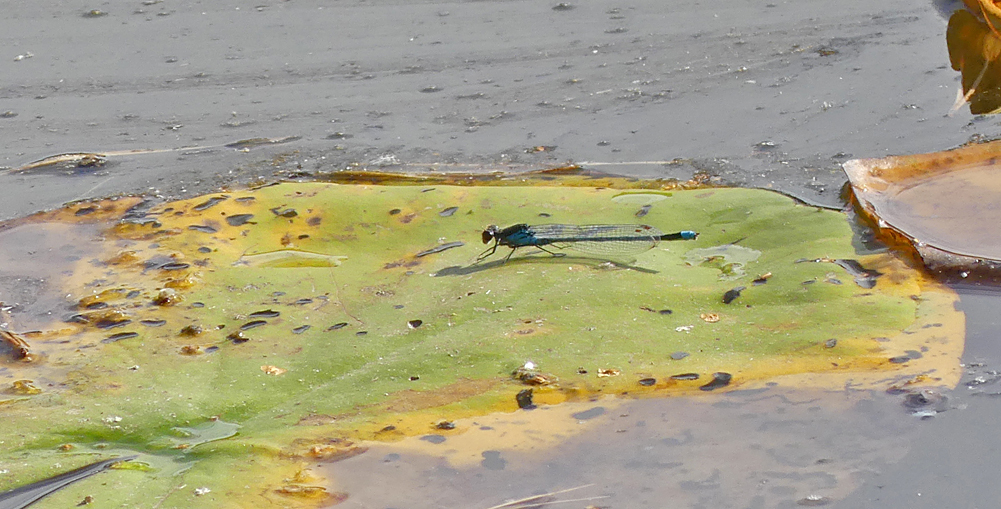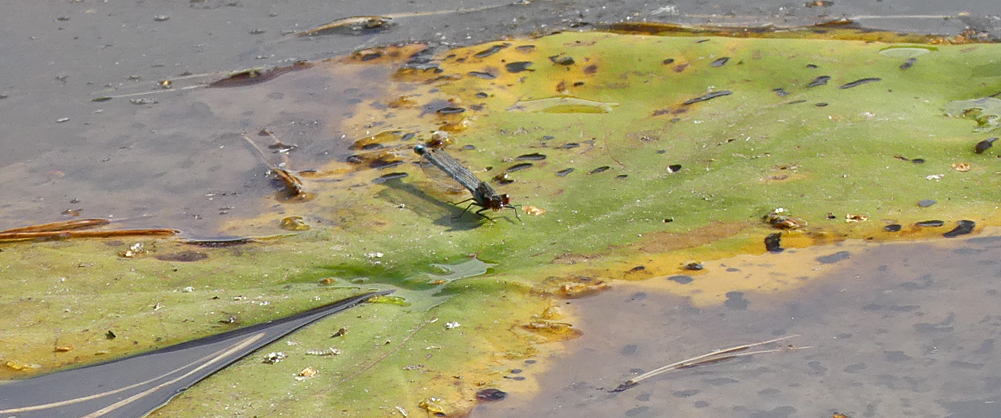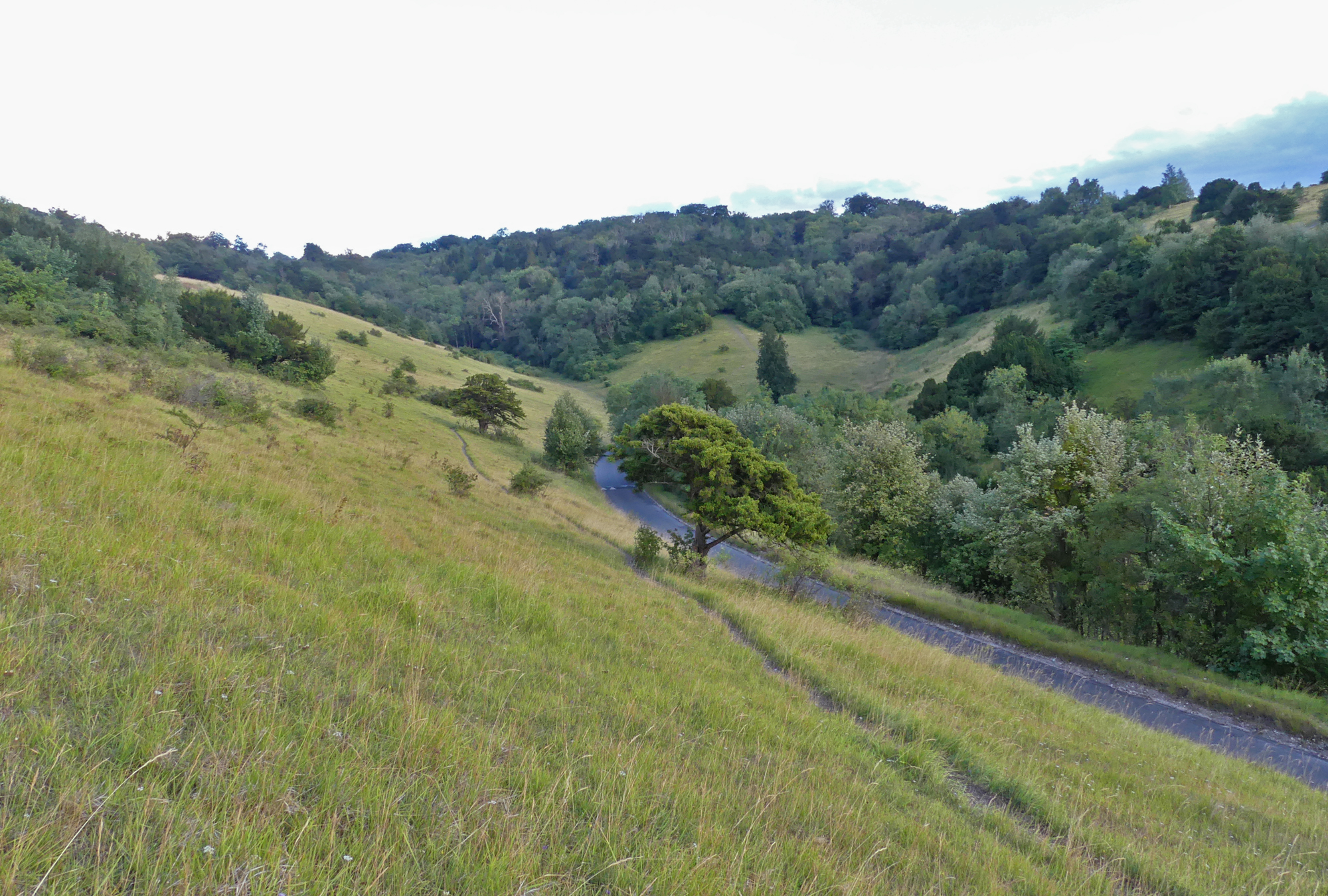Thursday 9th August 2018
/UK HOLIDAY - part 1 : SURREY
We had a holiday cottage booked in rural Norfolk between 11th and 18th August, our first full week away as a family for ages. The rest of the family were flying to Stansted on Saturday, but I took the car on the ferry the Wednesday before. This may seem a bit odd travelling separately, but taking into account savings on car hire and the extra cost of hold luggage on the plane nowadays, it wasn't very much more expensive, and squashing all five of us into the car for a potentially long drive was not ideal either. It also meant that if I went up a few days early then I could meet up with Andy for a couple of days looking for wildlife first. What an excellent plan!
So I caught the ferry in the afternoon of Wednesday 8th August, the first time I had crossed by sea for quite a while. With it being late summer, I was of course expecting to see lots of rare seabirds en route but even though I spent all my time on deck looking out, I saw nothing once Alderney disappeared. It is always nice to pass the Gannet colony though and I did see a flock of 5 Balearic Shearwaters take flight off the water nearby. There were no delays and I stayed at the slightly shabby Travelodge at Ringwood for the night.
Ortac Gannet colony
Gannet - near Alderney, 8 Aug 18
Gannet - near Alderney, 8 Aug 18
The plan was to pick up Andy from Godalming train station and we were to search the Surrey heaths for ticks aplenty. Our number one target was Sand Lizard, but also I wanted especially to improve my terrible dragonfly list, and there were about 7 or 8 species here I could get, plus I was expecting a lot of plant ticks of common species which do not grow in Guernsey. Also there were many other specialist invertebrates which live on the warm, sandy heaths that we could see. However, a massive spanner was thrown into the plan when, after weeks and weeks of baking hot sunshine, I arrived into Surrey to be greeted by miserable rain! We pulled into the car park at the famous Thursley Common and were hugely disappointed by the wet weather - we had literally zero chance of Sand Lizard in these conditions.
Massive raindrops peppering the Moat pond at Thursley Common, 9 Aug 18
Of course, we couldn't just sit there in the car so we got out anyway and concentrated on the Moat lake by the car park as we could shelter under the trees at least. This lake is meant to be terrific for many species of dragonfly but all we saw was a bedraggled Emerald Damselfly hanging off a tree. This wasn't one of the species I needed. Andy had a bash around with his sweep net and soon discovered an 18-spot Ladybird, a Scots Pine specialist, which was my first tick of the trip. The small black caddisfly Mystacides azurea was resting on the waterside vegetation and a had a flash of a tiny Common Lizards run through the grass.
Emerald Damselfly - Thursley, 9 Aug 18
18-spot Ladybird - Thursley, 9 Aug 18
It got a little bit brighter and we ventured out onto the sandy heath a little way. In amongst the Heather were small patches of Dwarf Gorse which were in flower, unlike their larger relative. The floor was covered in a patchwork of lichens, including two distinctive species, the carpet of "Reindeer Moss" Cladonia portentosa and the little red-tipped matchsticks of Cladonia floerkeana. We started seeing a few hoverflies and bees and things were looking better for insects. The small grasshoppers we were flushing were Mottled Grasshoppers which could be identified by their clubbed antennae. With Andy being able to point out these common but new species for me, it saved a lot of time not having to constantly search through ID guides. After a short time the rain returned and we started getting properly wet and we returned to the car to regroup.
Cladonia floerkeana - Thursley, 9 Aug 18
We retired to a café in the nearby village for a late breakfast and discussed what to do. The rain was really piddling down now and we couldn't really do much at the moment. We even considered knocking this area on the head and going to do some birding near our booked hotel in Kent for the rest of the day and returning in the morning. We felt that this was too much wasted driving time however and resolved to give it another go.
After the rain slowed a bit we drove to the Frensham Pond area as we had been told that it was another good Sand Lizard area - you never know we might be very lucky. We had a stomp through the woods here first of all as it was raining quite heavily on and off, but we found little that was new to me. As we left the trees and wandered back down the slope towards the road the sun started to poke through the clouds and we started seeing a few more things of interest. A common little moth here feeding on the heather was Aristotelia ericinella, a new species for me. We found a few bits and bats which may be identifiable later and were in quite good spirits as the weather was now pretty dry. There wasn't a great deal of variety on these acid heaths and we kept seeing the same things. No sign of any reptiles.
Surrey heathland at Frensham
Our next spot was Hankley Golf Course, another lizard location where we didn't see any. We had a similar selection of species and Andy netted the pretty pink spider Thomisus onustus which is one of the flower-living crab spiders and is quite a range-restricted species. I saw and heard a few Crossbills here distantly flying over the pines. We had a really good look here and found a few more interesting inverts.
Although it was very cloudy and dull we thought that we could get a few more dragonflies at Thursley Common now that is wasn't raining and we returned there about 4-ish to try again. This time we strode straight out to the marshland and boardwalks where there were regular small pools and ditches we could check. There were many common species of plants here that I had never or rarely seen. New species for me were White Beak-sedge, Bog Pondweed, Marsh Pennywort, Cottongrass and Bogbean. I really love the sundews and there were lots here on the mud. As well as the regular Round-leaved Sundew, we saw plenty of the less common Oblong-leaved Sundew. There were gigantic clumps of Black Bog-rush, very different to the tiny single plant I saw in Guernsey earlier in the summer.
Black Bog-rush - Thursley, 9 Aug 18
Oblong-leaved Sundew - Thursley, 9 Aug 18
Despite all these ponds and ditches, we didn't see any dragonflies at all. A Green Sandpiper dropped into one of the larger ponds and couple of young Dartford Warblers gave us an uncharacteristically prolonged view perched up on a small birch. Finally, beside one of the last pools along the loop, we got a few dragonflies including two new ones for me. A single female Black Darter was seen perched up on sedges but didn't give close views. Better views were had though of the single dark Small Red Damselfly right by the path.
young Dartford Warbler - Thursley, 9 Aug 18
Dartford Warblers - Thursley, 9 Aug 18
female Black Darter - Thursley, 9 Aug 18
parasitized Fox Moth larva - Thursley, 9 Aug 18
With this dragonfly success, we headed back to the Moat lake again to see if there were any more species out and about. The sun was now appearing every now and then and we actually got a few periods of hot weather. We quickly found some more damselflies in the poolside vegetation along the eastern edge of the lake. They were not hugely active but this meant that we could take some decent photos including some terrific bright red Small Red Damselflies which I could even use the macro lens on. A bit more sweeping from Andy revealed a few Raft Spiders Dolomedes fimbriatus with their distinctive white stripes. This species is another range-restricted species in the UK and was an excellent one to see and since I've already seen the even rarer Fen Raft Spider a few years ago in Norfolk, I've cleaned up on the genus!
Small Red Damselfly - Thursley, 9 Aug 18
Small Red Damselfly - Thursley, 9 Aug 18
Emerald Damselfly - Thursley, 9 Aug 18
Raft Spider - Thursley, 9 Aug 18
We walked round to the area of lily pads as this is typically where Red-eyed Damselflies hang out and it didn't take us too long to spot a couple resting on the pads. We couldn't get very close to them but this was another new species for me, with its deep red, bulging eyes. It seems that the weather was only good enough for the smaller species of dragonflies to be active.
Red-eyed Damselfly - Thursley, 9 Aug 18
Red-eyed Damselfly - Thursley, 9 Aug 18
It was now well into the evening and we had the great idea of driving to Box Hill to search for Silver-spotted Skipper. Really it was very late in the day to look for butterflies, especially as it was after 7 pm when we got there. Nevertheless we went for a walk and as we left the car park I looked down and was shocked by an absolutely huge, massive snail! Of course, we'd temporarily forgotten that this was also a site for Roman Snail. I knew they were bigger than garden snails but I wasn't prepared for just how much bigger. They were all at least 2 inches in diameter and with milky white flesh, you can see how they are "poached" for restaurants. They were originally brought to the UK by the Romans and only live on a few chalk downland sites in southern England.
Box Hill, Surrey
Roman Snail - Box Hill, 9 Aug 18
We walked the path up the south-facing grassy slope but didn't see any skippers, and very few other butterflies. We had a few moths but nothing that I hadn't seen before. I did have plenty of new plant ticks here - Upright Hedge-parsley, Ploughman's Spikenard, Great Lettuce, Wild Privet, Mistletoe, Hoary Ragwort, Black Bryony and Alder Buckthorn. It was almost 8 pm when we made our way back down, and with some ominous dark clouds assembling to the south and some ominous youths shouting obscenities at us from their speeding car, we thought it was time to call it a night.
Six-spot Burnet - Box Hill, 9 Aug 18


